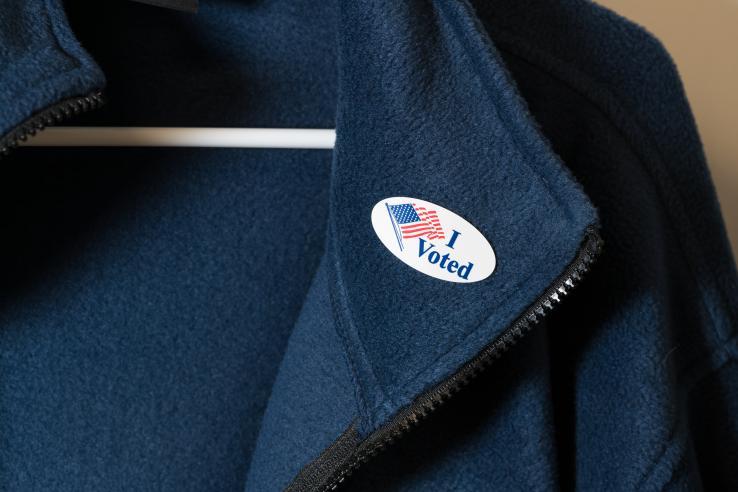
Affiliate Spotlight: Donald Green on the evolution of election science and evidence-based campaign tactics during COVID-19

In this affiliate spotlight, Don Green (Columbia University, Professor of Political Science) shares insights into his research on get-out-the-vote tactics and what these findings could mean for elections in the age of COVID-19.
Could you tell us about how you first became interested in election science?
In 1998, I had an argument with Alan Gerber, my longtime collaborator, about what bedrock knowledge consisted of in the field of campaigns and elections. Alan pointed out that anything I could name rested on potentially misleading observational evidence. After many hours of debate, this conversation inspired us to conduct a randomized experiment of roughly 30,000 people in the city of New Haven, encouraging them to vote through the random assignment of direct mail, phone calls, or door-to-door canvassing.
The nature of elections has changed dramatically over the years. In your experience, how has the use of experiments and political campaigns changed over the years?
When we first started doing experiments, the literature largely consisted of a handful of legendary field experiments from past decades, some of which showed absolutely gigantic effects. Unfortunately, not one of the previous studies properly handled the issue of noncompliance, which arises when the experimenter assigns someone to be canvassed or called but they cannot be reached. Scholars either dropped such people or reclassified them as part of the control group; both of those approaches can produce misleading results.
One of the things that really stood out to us was the relatively small magnitude of the effects that we found from our research. We found results that showed, for example, that canvassing worked; it did produce votes, roughly one vote for every twelve people contacted. That was much less than many people were expecting. We found across various experiments that the hope that campaigns and activists and others often placed in very large scale operations involving direct mail or commercial phone baking was not consistent with the number of votes those tactics were actually generating. Through a succession of experiments, I'd say the main thing that changed was a sense of skepticism. We’ve gained a more realistic sense of how inputs generate certain outputs and a greater understanding of the relative cost-efficiency of different tactics.
You’ve published research that focuses on get out the vote efforts in the context of COVID-19. Could you tell us a little bit about this work?
The primary question in our current studies is, how can you produce a strong get out the vote effect given a lack of personal contact? We've found that the more authentic and personalized the communication, the more effective it is. Face-to-face communication between strangers, coworkers, co-congregants, neighbors, friends, and family members is especially welcomed and credible, as this kind of interaction is usually social, unhurried, and genuine.
The goal of recent experiments is to see if we can still harness some of the authenticity of friend-to-friend communication but in the context of phone calls, text messages, or other kinds of interactions that don't involve the possible exchange of an infectious disease. The two experiments to date seem to show that the effects of this virtual contact are very large, but they need to be contextualized further in the current environment, which we are now doing. We won't know those results for many months. But the indications from the ground experiments in 2018, and 2019, suggests very strong effects.
Have you seen any campaigns successfully pivot during this time?
One of the temptations for campaigns is to just do what they used to do in the pre-COVID-19 environment but on a grander scale. People are being flooded with direct mail or text messages from campaigns. I would be surprised if these tactics generated big effects, even if they're able to make it through to targeted voters. On the other hand, a few groups have reached out to voters via social networks, an approach that I suspect will be quite successful. We're hoping to do some evaluations of their efforts.
Based on your research, what are the big takeaways on what successful strategies are for getting out the vote?
I think authentic personal communication within your peer network is the key to success. It’s hard to contact strangers nowadays; even if you are authentic and personal, people have their guard up; it’s hard to get ahold of them. That’s why it's probably more sensible to exert your influence by contacting people in your social network, and social media has made that so easy.
When you reach out to people in your social network about voting, you don't necessarily need a partisan message when you talk to them because you probably already have a sense of their politics. Urge them to vote in a way that doesn't seem mercenary or partisan; simply urge them to make their voice heard. Demonstrate your resolve by suggesting that you vote together by dropping off your ballots at the mailbox, or urge them to send you a selfie when they vote early or in person. There are many ways to build accountability into voting appeals in a manner that is supportive and enthusiastic.
Besides a peer to peer network, what is the best way to communicate to someone that is unengaged in the electoral system? What is the best line of communication that a campaign can utilize to speak to an eligible voter?
It depends on the person we're talking to. Each type of person requires a somewhat different approach. If they are already a registered voter, at some point they must have thought it important to vote. Getting them over the hump to actually voting is fairly easy in a major election like this one. If they're not a registered voter, then you've got a bigger task, which is to try to get them sufficiently interested to go through the process. The more you offer to help them get registered, the easier it will be. Fortunately, randomized trials do show that registering someone dramatically raises their chances of going on to vote.
What are some unanswered research questions that you’re particularly interested in exploring?
One area that has not been adequately evaluated is the relative effectiveness of different messengers. What kind of person should we send door to door? What kind of person should be tabling to encourage registration? Does the answer depend on the kind of people you are hoping to spur to vote? Although hundreds of randomized trials have been conducted, few if any have rigorously assessed the relative effectiveness of different categories of messengers for various kinds of target voters.
Do you have any final thoughts you'd like to share with us?
I think one of the more interesting developments is the research around the relative effectiveness of persuading people to change their votes. This is different from the question of getting people to vote. In principle, persuasion would be much more attractive than mobilization. If I subtract a vote from the opponent and add a vote to our column, that's essentially a change of two votes. By comparison, if I get somebody who is not going to vote to vote for our column, that's one vote. And yet, persuasion seems to be very difficult, and most rigorous interventions have found weak effects that dissipate quickly over time. So the question arises: under what conditions is persuasion possible?
Related Content

Affiliate spotlight: An interview with Amy Finkelstein on how her recent MacArthur Fellow award opens up new possibilities in innovative research

Affiliate Spotlight: Lawrence Katz on researching housing and economic mobility to create moves to opportunity


